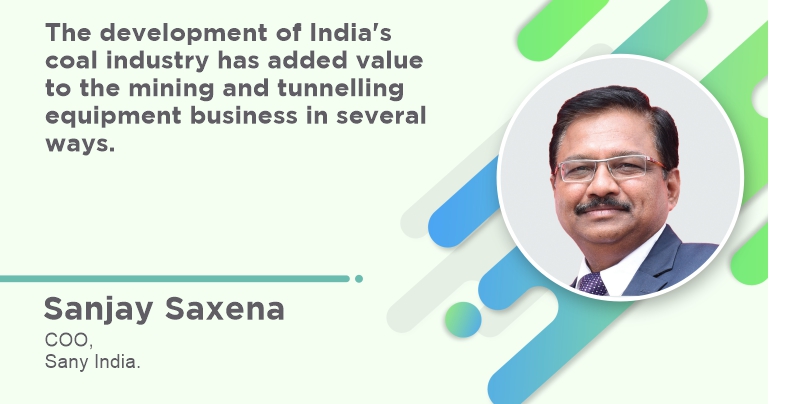India is now a leading global coal producer and importer
By Edit Team | October 12, 2023 2:11 pm SHARE

The development of India’s coal industry has added value to the mining and tunnelling equipment business in several ways.
India’s mining and tunnelling equipment sector is rising quickly as the country takes the lead in the world for coal production and importation, embracing cutting-edge technologies to fulfil the nation’s expanding infrastructural needs.
How can India leverage its emerging prominence in the global coal sector to foster innovation and sustainability in mining practices?
India is now a leading global coal producer and importer. State-owned mining companies have embraced new technologies and invested in cutting-edge mining products. According to the Ministry of Coal, India’s domestic coal production has surged by approximately 23% in the past five years, reaching 893.08 million tonnes in the 2022-23 fiscal year.
The development of India’s coal industry has added value to the mining and tunnelling equipment business in several ways. Firstly, the increased demand for equipment has created opportunities for OEMs like us, wherein we supply advanced machinery for coal extraction and processing. Secondly, the expansion of mining projects has necessitated the use of reliable and technologically advanced equipment, driving the growth of the industry. Thirdly, the focus on safety and environmental regulations has led to the adoption of innovative equipment that complies with stringent standards. Additionally, India’s prominence in the coal sector has opened export opportunities, allowing manufacturers like ours to expand its market nationally.
How is the mining and tunnelling equipment industry adapting to the present infrastructure scenario, further contributing to the sector’s growth?
India’s mining and tunnelling equipment industry is actively adapting to the present infrastructure scenario, contributing to the sector’s growth. OEMs like us are focusing more on developing technologically advanced equipment that meets the evolving needs of infrastructure projects. This includes automation, remote monitoring, and intelligent control systems, which enhance efficiency, safety, and productivity. By providing equipment tailored to the present infrastructure requirements, the industry supports the development of robust projects in mining and tunnelling. This adaptation plays a vital role in driving the sector’s growth, ensuring India’s infrastructure needs are met effectively.
With the massive expansion plans of roads and highways, what sustainable practices assist in performing safe and sustainable mining and tunnelling?
With the extensive expansion of roads and highways, sustainable practices are in place to ensure safe and environmentally friendly mining and tunnelling. These practices include implementing advanced technologies for efficient resource extraction, strict adherence to safety protocols, and using environmentally friendly equipment. Measures such as land reclamation, waste management, and minimising air and water pollution are also considered. These sustainable practices balance infrastructure development with environmental preservation, ensuring a safe and sustainable approach to mining and tunnelling in support of road and highway expansion plans.
How can technology innovations be integrated and enhanced to address the diverse geological challenges effectively?
During underground tunnelling for mining, several major geological challenges are encountered. These include unstable ground conditions, such as rock falls or collapses, which can hinder progress and pose safety risks. Water ingress is another significant challenge, requiring effective dewatering methods. Geological faults and fractures can affect the stability of the tunnel, demanding careful engineering solutions. Additionally, encountering unexpected rock formations or complex rock layers can impact excavation progress. Adequate geological surveys, ground support systems, cutting-edge equipment, and monitoring techniques are essential for addressing these challenges and ensuring successful mining operations for underground tunnelling.
How have the government regulations and policies in India been successful in attracting both domestic and foreign investments?
Government regulations and policies in India foster infrastructure development by streamlining approval processes, offering incentives for private investment, and promoting public-private partnerships. They focus on improving project viability, addressing environmental concerns, and ensuring sustainable growth. These measures aim to attract domestic and foreign investments, enhance infrastructure connectivity, and drive economic development across various sectors in the country.
Cookie Consent
We use cookies to personalize your experience. By continuing to visit this website you agree to our Terms & Conditions, Privacy Policy and Cookie Policy.




































-20240213125207.png)

























